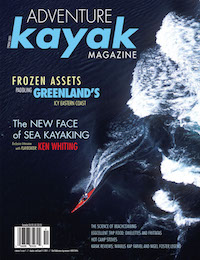I’m not an ideal kayaking partner. It’s not as though I lack good judgment or conversational skills, but when it comes to helping set up camp, you can forget about it. I’ll be long gone, scanning the beach.
I comb beaches in hopes of finding intriguing items like crab traps, a message in a bottle, a really thick chunk of rope or even (I’m crossing my fingers here) a can of Lucky Lager.
Most of the time I find nothing but junk, like that knotted piece of driftwood that resembled Jean Chrétien.
Above all, I’m obsessed with glass fishing floats that have escaped from fish nets in Asia, hopped aboard an ocean current, caught just the right wind and wave combination and washed up on a beach instead of a rock. They’re hardly worth a cent, but after surviving that ride they’re priceless to me.
Despite the complexity of ocean currents, they’re driven mainly by nothing more than wind. When weather patterns are such that strong winds regularly prevail in one direction, these winds push water along with them and create currents that swirl around the oceans in regular patterns.
The journeys of my glass floats begin off the coast of Asia when, one way or another, they escape from fish nets. They enter the Kuroshio Current which carries them northeast across the Pacific before arcing south along the west coast of North America—all at less than 16 kilometres per day, the maximum speed of an ocean current. A few years later, they skirt the coast of Vancouver Island. If the wind and waves cooperate, they are blown out of the current and wash ashore. If not, it may be years before the right conditions conspire to wash them out of the current and into someone else’s campsite.
I’ve found all my glass floats along a 20-kilometre section of coastline. That’s not surprising, according to Curtis Ebbesmeyer, a Seattle-based oceanographer.
“Beaches are like restaurants. Some serve Thai food, some Indian or Chinese food,” he says. “Each beach interacts with the currents, winds and waves in a unique way.”
The interplay of these forces and the buoyancy of the objects explain how some beaches are well known for their glass or driftwood artifacts, while others trade in more pedestrian goods: running shoes, for instance.
In 1992, the Hansa Carrier freighter encountered a storm in the middle of its run from Korea to the United States. Several containers were washed overboard by massive waves and an estimated 60,000 Nike shoes spilled into the Pacific. The next winter errant sneakers, still in good condition, began washing up on beaches in British Columbia, California and Hawaii. Studying their distribution, Ebbesmeyer was able to further map the Pacific’s currents.
While glass floats and running shoes often wash ashore on B.C. or Washington beaches, other currents might carry cargo to another ocean all together.
A load of bath toys washed off a container ship bound for Seattle in 1992. Ebbesmeyer followed their progress through reports from beachcombers and lighthouse keepers. Instead of a leisurely tour around the Pacific, the rubber duckies ended up bobbing through the Bering Strait between Alaska and Siberia where they were likely frozen in pack ice. The Arctic Ocean’s pack ice drifts eastward and Ebbesmeyer expects the first rubber duckies to thaw, navigate the currents of the Atlantic and wash onto beaches on the east coast of Canada any day now, more than a decade after they first swam free.
Unlike most beach booty, the rubber toys are actually worth something. The first person to find a duck on the east coast will win a $100 reward.
Whether it’s a $100 ducky, some glass artifact, a solo salty sneaker or a driftwood gargoyle, value is truly in the eye of the beachcomber. I’m thrilled with a worthless glass float, and, as Ebbesmeyer says, “Poor people around the world know, if you need a pair of shoes, you go to the beach.”
Ryan Stuart lives on Vancouver Island and still hopes to find a rubber ducky.




